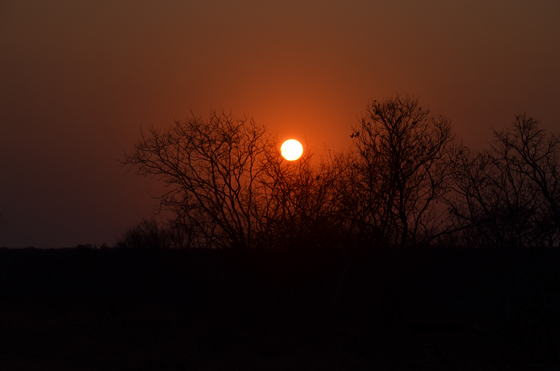
No, seriously. He did.
And the other day, he sat down to tell me about it. I’ll share some highlights from our chat so you can vicariously hunt leopards and lions like I did.
Alan goes to Africa (watch out for this new children’s book)
Alan and I are both part of the WestmorelandFlint creative team (he’s an art director and I write stuff), so we work together quite a bit. When he first told me he was going to South Africa, I tried to stifle my jealousy by telling myself that I, too, have been on a safari.
Unfortunately, mine involved searching the Internet on a popular Web browser – not nearly as exciting as an African wildlife exploration.
So how do you just decide to go on a safari? That was my question, too.
Alan said he went for his dad, who’s been hunting dangerous game in places like Zimbabwe and South Africa for more than a decade. Alan’s dad invited him and his wife, stepmom and siblings on a safari to learn about his passion and share in his adventures.
The crew stayed at the Matlabas Game Lodge in Limpopo, which is near the Batswana border. From the way Alan described it, it sounds like a really nice place. They serve you three meals a day, there’s a pool and it even has a bar overlooking the Matlabas River. I bet you can guess where Alan spent his evenings.

This is where Alan slept.
View from the lodge. Now this, I could handle.
The first couple days they went to Marakele National Park and Pilanesberg National Park, where they drove around in Jeeps and looked at animals. Here are some of the pictures from the parks he shared with me:
This is why you should floss.
This is a jackal, which Alan said is kind of like a coyote.
You know, your everday croc.
Elephant herd.
Too close for comfort there, Mr.
Like mother like daughter.

Those glasses are not Alan's.

These are called rhinos.
They spent the rest of the week hunting on the lodge’s 16,000-acre property.
The crew. Alan is the one in blue. He likes to match the sky because that's where dreams happen.
I asked Alan how you go about hunting this wild game, and he explained it as ‘spot and stalk.’ First, you drive around until you spot your quarry. Then, you get out and stalk it into the bush.

Notice his technique – it's all in the strategic 90-degree arm bend.
After you spot your game, he said you can end up hiking three miles before you get close enough to shoot it. Meanwhile, with the arid landscape, everything you step on makes noise. Alan said this was his favorite part of the trip – tracking the animals while trying to go unnoticed.
Though Alan didn’t shoot any animals – he just tagged along for the thrill – his family got an eland, an impala, a zebra, three warthogs (poor Pumbaa!), a red hartebeest and a gemsbok. Alan explained that the lodge owns all the animals on the property, so there’s a trophy fee if you shoot one.

For example, if they had shot this giraffe they saw, they would have had to pay $3,500.

One of the professional hunters carrying out the kill - an impala.
Though this spot and stalk process is extremely difficult in and of itself, Alan said his dad takes on an extra challenge – he uses a bow.
“Not many people hunt dangerous game with a small pointed stick,” said Alan. “Especially when they’re 62.”
To hunt with a bow, you have to get within 15 to 30 yards of the animal. But with a rifle, you can take a shot at 150 yards. Imagine being 15 yards from a lion – yikes.
All of this was starting to sound a little insane to me, but then Alan explained that they go with a guide who is armed with a powerful sidearm or a rifle.
Between all the hunting, there was also a lot of eating. Alan said he tried pretty much every type of wild game you can imagine, but his favorites were eland, warthog and impala. He also ate a delicious meatball made of “something.” He doesn’t know what. But it was good.
A group of traditional zulu dancers performed at the lodge one night. Not pictured: Alan Josephson.
The lodge used some of the meat from their kills to feed the next group of hunters and sold the rest to village markets. The hides will be tanned, stored, stuffed by a taxidermist and then shipped back to the U.S., a process Alan says can take up to a year.
In sum, for Alan, the safari was the trip of a lifetime. For me, it was the closest I’ll ever get to a wild game animal. And frankly, I’m okay with that.
Bodily harm AND damage. Because they're clearly different.
